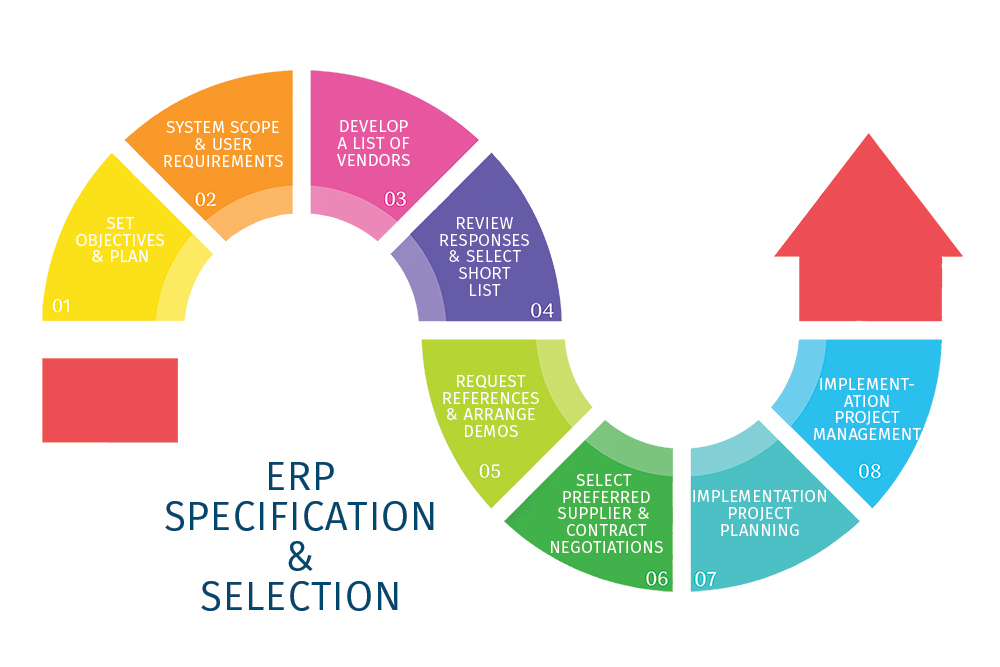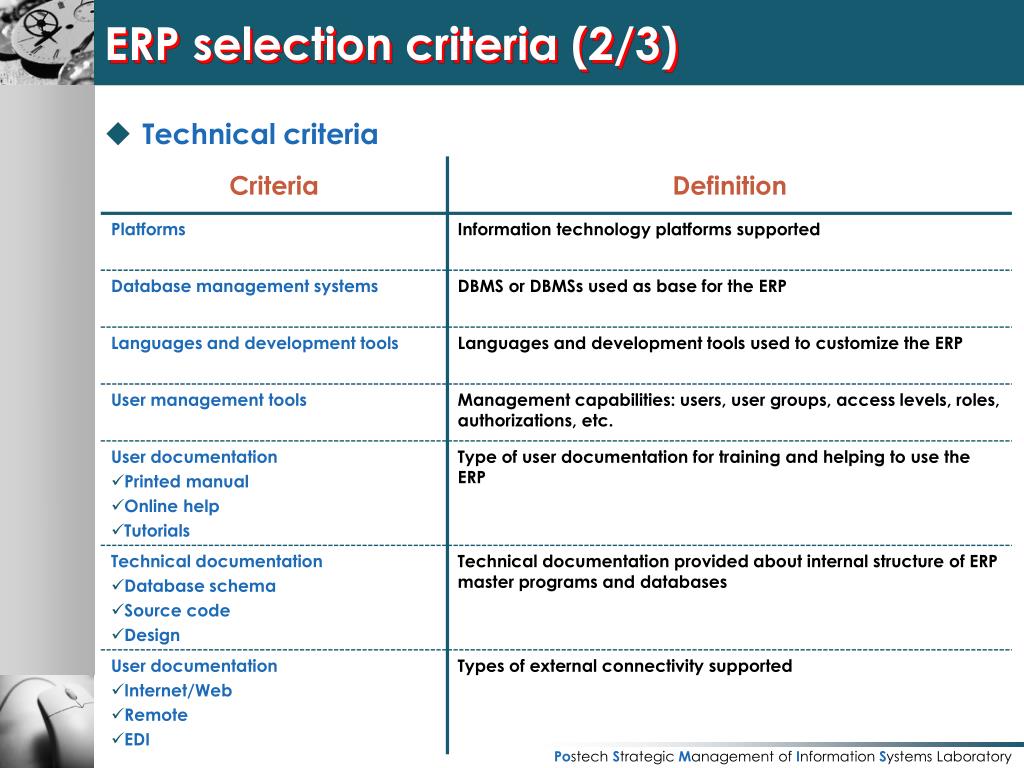

By integrating financial information in a single system, ERP systems unify an organization’s financial reporting. Follow the step-by-step ERP selection process and keep your business requirements in mind when making your decision.ĭownload OptiProERP’s Roadmap for ERP Selection in Today’s Digital World designed to help manufacturers and distributors choose the best ERP solution for their business needs.ERP systems improve enterprise operations in a number of ways. So, are you embarking on an ERP selection journey? Use the right criteria throughout all the stages of the selection process to evaluate which solution is best for your company. Make sure you understand all aspects of each solution to avoid regrets later.
#Enterprise erp selection criteria software

When you evaluate multiple ERP options, ask about functionalities, ease of use, if the software is compatible with developing technologies, what the total cost of ownership is, and what training is available for users. The implementation team takes the time to understand your specific requirements and recommends the right tool or solution that will complement your business needs. While selecting and evaluating ERP solutions, manufacturers should talk about the industry-specific functionality offered, future readiness of the software, if the software integrates with and supports digital capabilities, and what are your expectations for vendors.Ī strong and experienced ERP partner can help you maximize your Return on Investment (ROI).

Here are some elements to keep in mind while going through the ERP selection process.

In this blog, we will see what factors manufacturers should consider before selecting ERP for today’s digital world. “Which ERP software will meet our business requirements?” is often a common question raised by decision-makers. For this significant investment, it is important to realize the selection criteria for an ERP system. Enterprise Resource Planning software is end-to-end business management software designed to manage business operations, including production, sales, purchasing, accounting, human resources, and more.


 0 kommentar(er)
0 kommentar(er)
